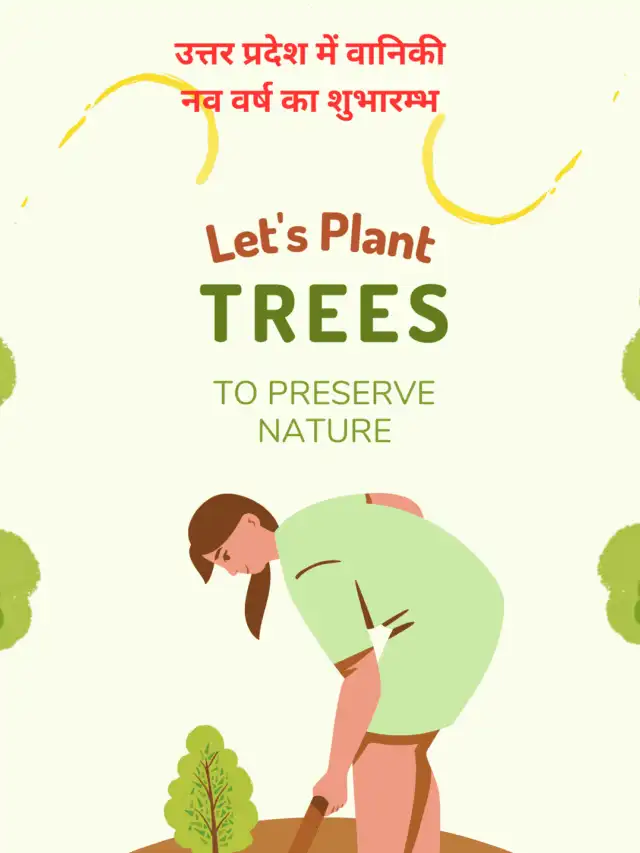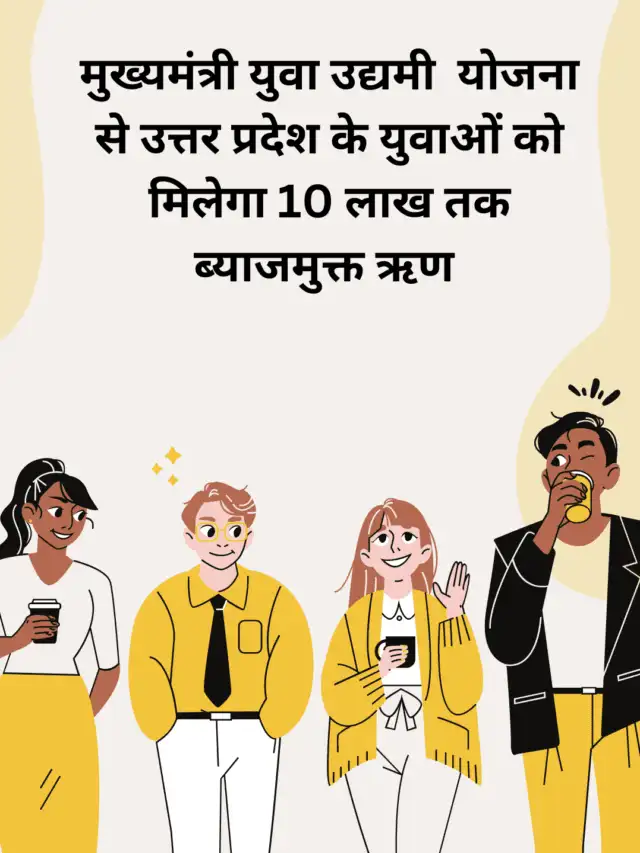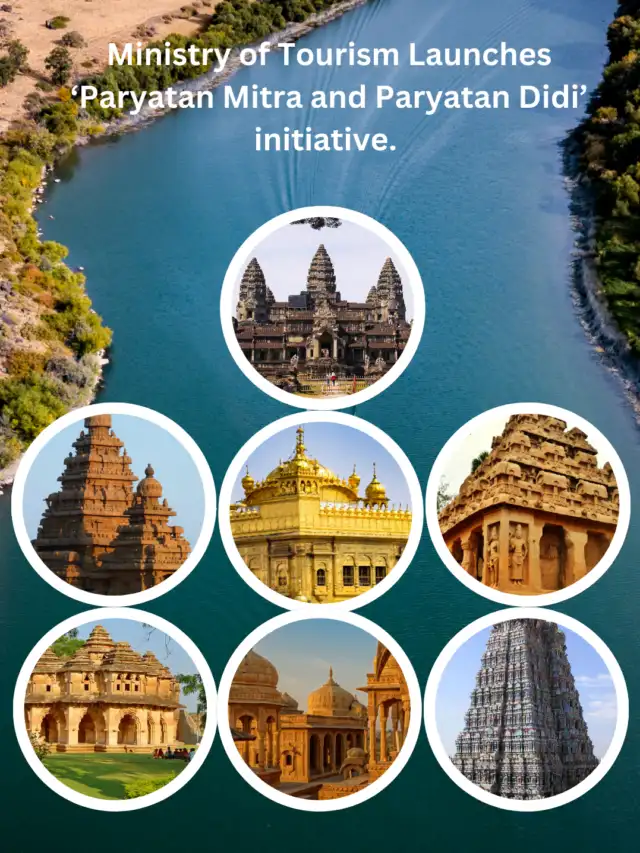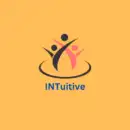India’s commitment to Disability Rights
(Through the Ministry of Social Justice and Empowerment)
What is driving the transformation in Disability Rights in India?
Disability rights in India are witnessing a profound transformation, driven by the government’s commitment to inclusivity and empowerment for persons with disabilities (PwDs). A series of policies and initiatives have been introduced to ensure that individuals, irrespective of their abilities, can access opportunities and participate fully in society. At the forefront of this effort is the Accessible India Campaign, aimed at creating a barrier-free environment in education, transportation, and public spaces to enhance accessibility for all.
What government schemes are empowering PwDs?
The Indian government has launched numerous schemes aimed at empowering PwDs, including financial assistance programs, skill development initiatives, and educational support. A key initiative is the Divya Kala Mela, which celebrates the craftsmanship of differently-abled artisans, providing a platform to showcase their talents and fostering economic self-reliance.
How is cultural and artistic expression promoting inclusivity?
The government recognizes that cultural and artistic expression plays a crucial role in the disability rights movement. By highlighting the talents of individuals with disabilities, society can challenge stereotypes and cultivate a more nuanced understanding of their capabilities. This approach underscores the government’s dedication to acknowledging the diverse contributions of all individuals, thereby promoting a more inclusive and equitable future.
Accessible India Campaign: What does it aim to achieve?
What is the Accessible India Campaign?
Launched on December 3, 2015, by the Department of Empowerment of Persons with Disabilities (DEPwD), the Accessible India Campaign (Sugamya Bharat Abhiyan) is designed to create universal accessibility for Persons with Disabilities across India.
What are the key focus areas of the campaign?
- Built environment accessibility: Making physical spaces like schools, medical facilities, and workplaces barrier-free for everyone.
- Transportation accessibility: Improving access to air travel, buses, taxis, and trains to allow PwDs to move independently.
- Information and communication accessibility: Enhancing website accessibility, improving audio-visual content, and ensuring critical information is available in accessible formats.
- Sign language access: Increasing the availability of sign language interpreters, improving captioning, and providing interpretation in public media to support the deaf and hard-of-hearing communities.
Divya Kala Mela: How does it empower artisans with disabilities?
What is the Divya Kala Mela?
Inaugurated on December 2, 2022, the Divya Kala Mela represents a significant step toward inclusivity by celebrating the craftsmanship of differently-abled individuals (Divyangjan). The event underscores India’s evolving narrative around disability and craftsmanship, bringing historical and cultural dimensions into focus.
How has the Mela expanded and impacted PwD artisans?
Since its launch, over 20 Divya Kala Melas have been organized across India. The latest mela in Pune, Maharashtra, saw 100 participants showcasing a diverse range of products, including home décor, eco-friendly stationery, clothing, toys, personal accessories, and organic foods. The mela aligns with the government’s Vocal for Local initiative, empowering Divyang artisans while fostering economic self-reliance.
What role does culture play in the Mela?
The event also features the Divya Kala Shakti cultural program, where performances by Divyangjan artists challenge societal perceptions about their abilities. Supported by financial institutions like NHFDC, NBCFDC, NSFDC, and NSKDFC, the mela not only provides a platform for showcasing talents but also ensures economic sustainability and market integration for Divyang artisans.
Empowerment schemes of the Government launched for PwDs?
- Rights of Persons with Disabilities (RPwD) Act, 2016?
The Rights of Persons with Disabilities (RPwD) Act, 2016 aims to ensure that persons with disabilities enjoy their rights with dignity and without discrimination. This Act, aligned with the United Nations Convention on the Rights of Persons with Disabilities (UNCRPD), replaced the earlier Persons with Disabilities Act of 1995.
- the National Trust for the Welfare of PwDs
The National Trust for the Welfare of Persons with Autism, Cerebral Palsy, Mental Retardation, and Multiple Disabilities Act, 1999 establishes a national body dedicated to the welfare of individuals with these disabilities.
- The Rehabilitation Council of India Act, 1992
The Rehabilitation Council of India Act, 1992 regulates services for PwDs, sets standards for rehabilitation syllabi, and maintains a Central Rehabilitation Register for qualified professionals.
- Scheme for Implementation of the Rights of Persons with Disabilities Act (SIPDA)
Launched in March 2015, the Scheme for Implementation of the Rights of Persons with Disabilities Act (SIPDA) focuses on skill training for PwDs aged 15 to 59 years. The scheme promotes the social inclusion of PwDs by providing them with the skills necessary for employment.
Additional schemes support the empowerment of PwDs?
- How does the ADIP scheme assist PwDs?
The Assistance to Disabled Persons for Purchase/Fitting of Aids/Appliances (ADIP) scheme has been operational since 1981. It funds various agencies to distribute aids and assistive devices to PwDs, including cochlear implants for children with hearing impairments.
- What is SAMARTH Respite Care?
The SAMARTH Respite Care program offers temporary care for PwDs from Below Poverty Line (BPL) and Low Income Group (LIG) families in crisis. It provides a supportive environment for orphans and PwDs.
- What is the Financial Assistance to Deaf Colleges Scheme?
This scheme provides financial support to deaf colleges in five regions of India, ensuring access to education for hearing and speech-impaired students.
- What is the Deendayal Divyangjan Rehabilitation Scheme (DDRS)?
The DDRS provides grant-in-aid to NGOs running special schools, early intervention centers, and community-based rehabilitation programs for PwDs. The scheme also focuses on empowering deaf and dumb students.
- How does the NDFDC empower PwDs economically?
The National Divyangjan Finance and Development Corporation (NDFDC) provides concessional loans through two flagship schemes:
- Divyangjan Swavalamban Yojana (DSY)
- Vishesh Microfinance Yojana (VMY)
These schemes focus on promoting the socio-economic empowerment of PwDs by offering financial support for business ventures.
- What scholarships are available for students with disabilities?
The Department of Empowerment of Persons with Disabilities (DEPwD) implements an umbrella scheme for scholarships, with six different components aimed at supporting students with disabilities in their educational pursuits.
- How is indian Sign Language (ISL) being promoted?
The Indian Sign Language Research and Training Centre (ISLRTC) offers a diploma in teaching Indian Sign Language, with waived tuition fees for deaf students registered with the Unique Disability ID (UDID). Additionally, ISLRTC has published a dictionary containing 10,500 words to support communication for deaf students.
- What is the PM-DAKSH-DEPwD portal?
This portal includes two important modules:
- Skill training: Provides skill development programs for PwDs.
- Divyangjan Rozgar Setu: Bridges the gap between employers and PwDs by offering geo-tagged employment opportunities.
What role do National Institutes and CRCs Play in PwD empowerment?
Two national institutes, the Ali Yavar Jung National Institute for Speech & Hearing Disabilities (AYJNISHD) and the Indian Sign Language Research & Training Centre (ISLRTC), focus on the needs of persons with speech and hearing impairments. Additionally, 25 Composite Regional Centres (CRCs) serve as outreach centers for rehabilitation services, professional training, and PwD awareness.
Conclusion: What is india’s vision for a more inclusive future?
India’s evolving approach to disability rights reflects a growing commitment to fostering inclusivity, creativity, and empowerment. With initiatives like the Accessible India Campaign and Divya Kala Mela, the government is providing PwDs with platforms to showcase their talents and become economically self-reliant. These efforts symbolize a broader societal movement toward recognizing the potential of every individual, paving the way for a more inclusive and equitable India.
भारत की दिव्यांग अधिकारों के प्रति प्रतिबद्धता
(सामाजिक न्याय और अधिकारिता मंत्रालय के माध्यम से)
भारत में दिव्यांग अधिकारों में यह बदलाव किस वजह से हो रहा है?
भारत में दिव्यांग अधिकारों में तेजी से बदलाव आ रहा है, जो सरकार की समावेशिता और दिव्यांग व्यक्तियों (PwDs) को सशक्त बनाने की प्रतिबद्धता को दर्शाता है। सरकार ने ऐसे कई नीतियां और पहल शुरू की हैं, ताकि हर व्यक्ति को समान अवसर मिल सके और वे समाज में पूर्ण रूप से भाग ले सकें। इस दिशा में सबसे प्रमुख पहल सुगम्य भारत अभियान है, जिसका उद्देश्य शिक्षा, परिवहन, और सार्वजनिक स्थानों में पहुंच को सुलभ बनाना है, जिससे सभी के लिए एक बाधारहित वातावरण तैयार हो सके।
दिव्यांगों को सशक्त बनाने के लिए सरकार की कौन-कौन सी योजनाएँ हैं?
भारत सरकार ने दिव्यांग व्यक्तियों को सशक्त बनाने के लिए अनेक योजनाएं शुरू की हैं, जिनमें वित्तीय सहायता, कौशल विकास और शैक्षिक सहयोग शामिल हैं। इनमें से एक प्रमुख पहल दिव्य कला मेला है, जो दिव्यांग कारीगरों की शिल्पकला का उत्सव मनाता है और उन्हें आर्थिक रूप से आत्मनिर्भर बनने के लिए एक मंच प्रदान करता है।
सांस्कृतिक और कलात्मक अभिव्यक्ति समावेशिता को कैसे बढ़ावा दे रही है?
सरकार ने यह माना है कि सांस्कृतिक और कलात्मक अभिव्यक्ति दिव्यांग अधिकार आंदोलन में महत्वपूर्ण भूमिका निभाती है। इससे समाज में पूर्वाग्रहों को चुनौती दी जा सकती है और दिव्यांग व्यक्तियों की क्षमताओं को बेहतर ढंग से समझा जा सकता है। यह दृष्टिकोण सरकार की इस प्रतिबद्धता को दर्शाता है कि वे सभी व्यक्तियों के योगदान को मान्यता देना चाहते हैं और एक अधिक समावेशी और समानता आधारित भविष्य का निर्माण करना चाहते हैं।
सुगम्य भारत अभियान: इसका उद्देश्य क्या है?
सुगम्य भारत अभियान क्या है?
3 दिसंबर 2015 को दिव्यांगजन सशक्तिकरण विभाग (DEPwD) द्वारा शुरू किया गया सुगम्य भारत अभियान (Accessible India Campaign) दिव्यांग व्यक्तियों के लिए भारत भर में सार्वभौमिक पहुंच को सुनिश्चित करने के उद्देश्य से शुरू किया गया था।
इस अभियान के प्रमुख क्षेत्र कौन-कौन से हैं?
- निर्मित वातावरण की सुलभता: स्कूल, चिकित्सा सुविधाएं और कार्यस्थलों जैसे स्थानों को सभी के लिए बाधारहित बनाना।
- परिवहन सुलभता: हवाई यात्रा, बस, टैक्सी और ट्रेन की पहुंच को बेहतर बनाना ताकि PwDs स्वतंत्र रूप से यात्रा कर सकें।
- सूचना और संचार सुलभता: वेबसाइटों की सुलभता को बढ़ाना, ऑडियो-विजुअल सामग्री को सुधारना, और आवश्यक जानकारी को सुलभ प्रारूपों में उपलब्ध कराना।
- सांकेतिक भाषा की पहुंच: बधिर और श्रवण-बाधित समुदायों के लिए अधिक सांकेतिक भाषा अनुवादकों, कैप्शनिंग और सार्वजनिक मीडिया में अनुवाद की सुविधा प्रदान करना।
दिव्य कला मेला: यह दिव्यांग कारीगरों को कैसे सशक्त करता है?
दिव्य कला मेला क्या है?
2 दिसंबर 2022 को शुरू किया गया दिव्य कला मेला समावेशिता की दिशा में एक महत्वपूर्ण कदम है, जो दिव्यांगजन (Divyangjan) की शिल्पकला का उत्सव मनाता है। यह मेला भारत के बदलते दृष्टिकोण को दर्शाता है, जहां दिव्यांगजन की शिल्पकला को मान्यता दी जा रही है और उन्हें आर्थिक आत्मनिर्भरता की दिशा में बढ़ावा दिया जा रहा है।
मेला ने दिव्यांग कारीगरों पर क्या प्रभाव डाला है?
शुरुआत के बाद से, भारत में 20 से अधिक दिव्य कला मेलों का आयोजन किया जा चुका है। पुणे, महाराष्ट्र में आयोजित हालिया मेला, जिसमें 100 प्रतिभागियों ने भाग लिया, विभिन्न प्रकार के उत्पादों जैसे होम डेकोर, पर्यावरणीय अनुकूल स्टेशनरी, कपड़े, खिलौने, व्यक्तिगत एक्सेसरीज़ और जैविक खाद्य पदार्थों का प्रदर्शन किया। यह मेला सरकार की वोकल फॉर लोकल पहल के साथ जुड़ा हुआ है और दिव्यांग कारीगरों को सशक्त बनाने में सहायक है।
मेला में संस्कृति की क्या भूमिका है?
इस आयोजन में दिव्य कला शक्ति सांस्कृतिक कार्यक्रम भी होता है, जिसमें दिव्यांग कलाकारों के प्रदर्शन से समाज में उनकी क्षमताओं के बारे में पूर्वाग्रहों को चुनौती दी जाती है। NHFDC, NBCFDC, NSFDC, और NSKDFC जैसी वित्तीय संस्थाओं द्वारा समर्थित, यह मेला न केवल प्रतिभाओं को दिखाने का मंच प्रदान करता है, बल्कि दिव्यांग कारीगरों की आर्थिक स्थिरता और बाजार में एकीकरण सुनिश्चित करता है।
दिव्यांगों के सशक्तिकरण के लिए सरकारी योजनाएँ
- दिव्यांगजन अधिकार अधिनियम, 2016 क्या है?
दिव्यांगजन अधिकार अधिनियम (RPwD Act, 2016) का उद्देश्य यह सुनिश्चित करना है कि दिव्यांगजन सम्मान के साथ और बिना किसी भेदभाव के अपने अधिकारों का उपभोग कर सकें। यह अधिनियम संयुक्त राष्ट्र दिव्यांगजन अधिकार संधि (UNCRPD) के अनुरूप है और 1995 के दिव्यांगजन अधिनियम की जगह लेता है।
- दिव्यांगजनों की भलाई के लिए राष्ट्रीय ट्रस्ट की क्या भूमिका है?
ऑटिज्म, सेरेब्रल पाल्सी, मानसिक विकलांगता और बहुविकलांगता के लिए राष्ट्रीय ट्रस्ट अधिनियम, 1999 ऐसे व्यक्तियों की भलाई के लिए एक राष्ट्रीय निकाय स्थापित करता है।
- पुनर्वास परिषद (RCI) की क्या भूमिका है?
पुनर्वास परिषद अधिनियम, 1992 दिव्यांगजनों के लिए सेवाओं को विनियमित करता है, पुनर्वास पाठ्यक्रमों के मानक निर्धारित करता है, और योग्य पेशेवरों के लिए केंद्रीय पुनर्वास रजिस्टर बनाए रखता है।
- SIPDA योजना दिव्यांगजनों की कैसे मदद करती है?
मार्च 2015 में शुरू की गई दिव्यांगजन अधिकार अधिनियम (SIPDA) के कार्यान्वयन की योजना 15 से 59 वर्ष के दिव्यांग व्यक्तियों के लिए कौशल प्रशिक्षण पर केंद्रित है। यह योजना दिव्यांग व्यक्तियों को रोजगार के लिए आवश्यक कौशल प्रदान करके सामाजिक समावेश को बढ़ावा देती है।
कौन-कौन सी अतिरिक्त योजनाएँ दिव्यांगजनों के सशक्तिकरण का समर्थन करती हैं?
- ADIP योजना दिव्यांगजनों की कैसे मदद करती है?
विकलांग व्यक्तियों को सहायक उपकरण खरीदने/फिट कराने के लिए सहायता (ADIP) योजना 1981 से संचालित है। यह विभिन्न एजेंसियों को वित्तीय सहायता प्रदान करती है ताकि वे दिव्यांग व्यक्तियों को सहायक उपकरण उपलब्ध करा सकें, जिसमें सुनने में अक्षम बच्चों के लिए कॉक्लियर इम्प्लांट भी शामिल है।
- समर्थ पुनर्वास देखभाल योजना क्या है?
समर्थ पुनर्वास देखभाल कार्यक्रम संकट में बीपीएल और निम्न आय वर्ग के परिवारों के दिव्यांग व्यक्तियों के लिए अस्थायी देखभाल प्रदान करता है। यह अनाथ और दिव्यांग व्यक्तियों के लिए सहायक वातावरण प्रदान करता है।
- बधिर कॉलेजों को वित्तीय सहायता योजना क्या है?
यह योजना भारत के पांच क्षेत्रों में स्थित बधिर कॉलेजों को वित्तीय सहायता प्रदान करती है, जिससे सुनने और बोलने में अक्षम छात्रों के लिए शिक्षा की पहुंच सुनिश्चित हो सके।
- दीनदयाल दिव्यांगजन पुनर्वास योजना (DDRS) क्या है?
DDRS गैर-सरकारी संगठनों को विशेष स्कूलों, प्रारंभिक हस्तक्षेप केंद्रों, और सामुदायिक आधारित पुनर्वास कार्यक्रमों के संचालन के लिए अनुदान प्रदान करती है। यह योजना विशेष रूप से बधिर और गूंगे छात्रों को सशक्त बनाने पर केंद्रित है।
- NDFDC आर्थिक रूप से दिव्यांगजनों को कैसे सशक्त करती है?
राष्ट्रीय दिव्यांगजन वित्त और विकास निगम (NDFDC) दो प्रमुख योजनाओं के माध्यम से रियायती ऋण प्रदान करती है:
- दिव्यांगजन स्वावलंबन योजना (DSY)
- विशेष माइक्रोफाइनेंस योजना (VMY)
ये योजनाएँ दिव्यांगजनों के सामाजिक-आर्थिक सशक्तिकरण को बढ़ावा देने के लिए उनके व्यापार उपक्रमों के लिए वित्तीय सहायता प्रदान करती हैं।
- दिव्यांग छात्रों के लिए कौन-कौन सी छात्रवृत्तियां उपलब्ध हैं?
दिव्यांग व्यक्तियों के सशक्तिकरण विभाग (DEPwD) दिव्यांग छात्रों को शिक्षा में मदद करने के लिए छात्रवृत्ति योजनाओं के तहत छह अलग-अलग घटक लागू करता है।
- भारतीय सांकेतिक भाषा (ISL) को कैसे बढ़ावा दिया जा रहा है?
भारतीय सांकेतिक भाषा अनुसंधान और प्रशिक्षण केंद्र (ISLRTC) भारतीय सांकेतिक भाषा सिखाने के लिए एक डिप्लोमा प्रदान करता है, जिसमें UDID के साथ पंजीकृत बधिर छात्रों के लिए ट्यूशन शुल्क माफ किया गया है। इसके अलावा, ISLRTC ने बधिर छात्रों की मदद के लिए 10,500 शब्दों का एक शब्दकोश भी प्रकाशित किया है।
- PM-DAKSH-DEPwD पोर्टल क्या है?
इस पोर्टल में दो महत्वपूर्ण मॉड्यूल शामिल हैं:
- कौशल प्रशिक्षण: दिव्यांगजनों के लिए कौशल विकास कार्यक्रम प्रदान करता है।
- दिव्यांगजन रोजगार सेतु: नियोक्ताओं और दिव्यांगजनों के बीच रोजगार के अवसरों के लिए एक प्लेटफ़ॉर्म प्रदान करता है।
राष्ट्रीय संस्थानों और CRCs की क्या भूमिका है?
दो राष्ट्रीय संस्थान, अली यावर जंग राष्ट्रीय श्रवण और वाक् विकलांगता संस्थान (AYJNISHD) और भारतीय सांकेतिक भाषा अनुसंधान और प्रशिक्षण केंद्र (ISLRTC) भाषण और श्रवण बाधित व्यक्तियों की आवश्यकताओं पर ध्यान केंद्रित करते हैं। इसके अलावा, 25 संयुक्त क्षेत्रीय केंद्र (CRCs) पुनर्वास सेवाओं, पेशेवर प्रशिक्षण, और दिव्यांगजनों के प्रति जागरूकता फैलाने का काम करते हैं।
निष्कर्ष: क्या है भारत का अधिक समावेशी भविष्य का विजन?
भारत का दिव्यांग अधिकारों के प्रति बदलता दृष्टिकोण समावेशिता, रचनात्मकता, और सशक्तिकरण को बढ़ावा देने की बढ़ती प्रतिबद्धता को दर्शाता है। सुगम्य भारत अभियान और दिव्य कला मेला जैसी पहलों के साथ, सरकार दिव्यांग व्यक्तियों को अपनी प्रतिभाओं को प्रदर्शित करने और आर्थिक रूप से आत्मनिर्भर बनने के लिए मंच प्रदान कर रही है। ये प्रयास इस दिशा में एक व्यापक सामाजिक आंदोलन का प्रतीक हैं, जो हर व्यक्ति की संभावनाओं को मान्यता देते हैं और एक अधिक समावेशी और समानता आधारित भारत की दिशा में मार्ग प्रशस्त करते हैं।









